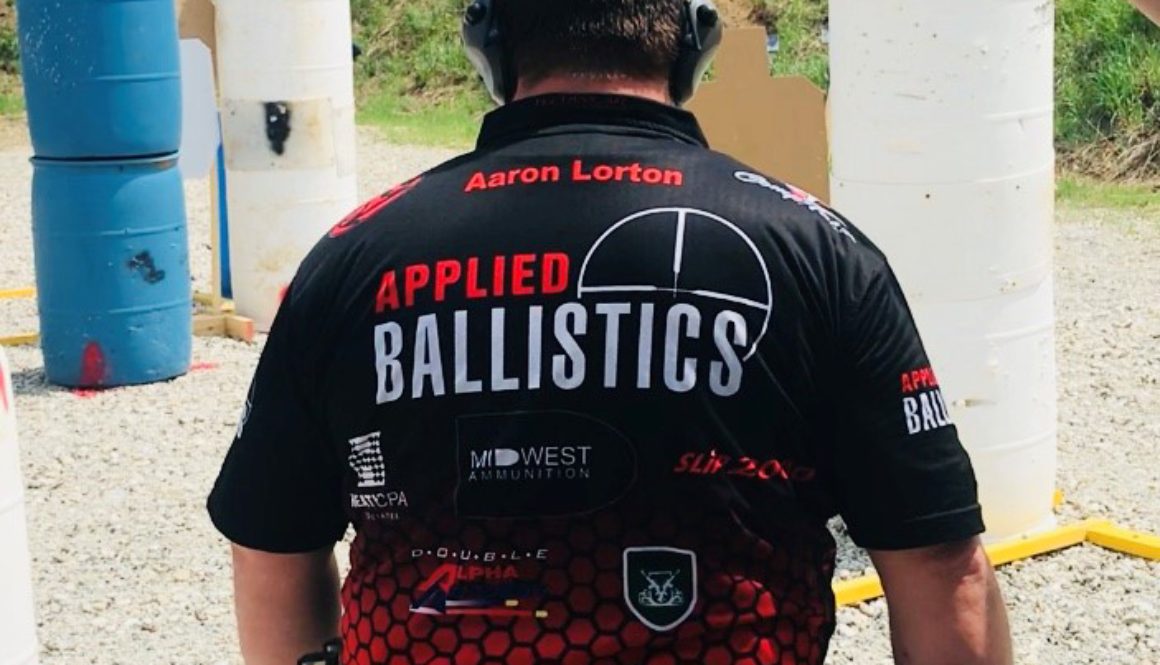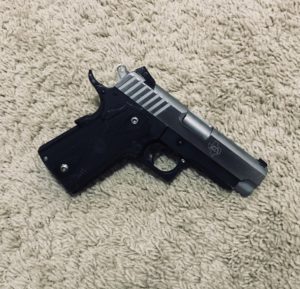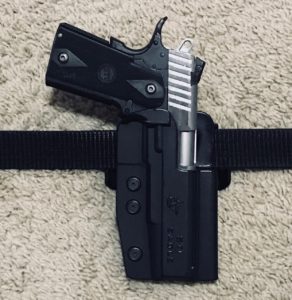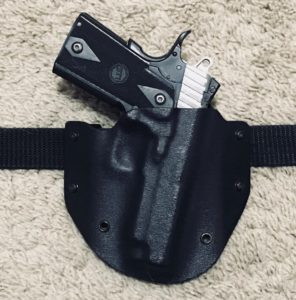Sig MPX PCC for Competition
The Sig MPX PCC
The Sig MPX, a gas operated semi-automatic carbine chambered in 9mm, has been on the market for a few years now and has been showing up with increasing regularity at USPSA and Steel Challenge matches.
With an MSRP at just over $2000 it isn’t surprising that the MPX is purchased primarily by serious shooters, including competitive shooters. Sig astutely listened to the competition crowd and made some significant changes to the carbine when it released its newest version of the MPX, dubbed the MPX PCC. Sig claims the new MPX to be “competition ready out of the box” (quoted directly from their website) and is marketing it directly to the competition market.
Before diving into the updated MPX I want to take a moment to talk about the previous MPX Gen2 and what one of our team shooters did to make it competition ready. Rob was the first on our team to switch to the MPX, picking up an MPX Gen2 last year after having intermittent reliability trouble with his AR.
When Rob began shooting his MPX a few issues showed up immediately. First was the trigger. The trigger on his MPX was, as my friend (and fellow trigger snob) Frank likes to say, “like dragging a brick over concrete.” The trigger was heavy and gritty and made shooting quickly a chore, especially since Rob was accustomed to the Elftmann trigger he had in his 9mm AR.
Another point of contention with the MPX was the stock. The rifle came with a stock that used two metal rods that collapsed along the side of the receiver. This stock provided a terrible cheek weld and was uncomfortable to shoot. It was definitely compact when collapsed, but that is of little concern on a competition gun.
Rob also found the handguard to be overly large. It was a KeyMod handguard of exceptionally large diameter. This large diameter made the gun harder to grip with the support hand effectively.
Lastly, the gun used a pinned and welded flash hider. This was probably done to make the gun as short as possible without it falling under NFA regulations. This is not useful to a competitive shooter since it only saved a couple inches in length but it made it difficult to change the muzzle device over to a brake, which is generally preferred by the competition crowd. You either have to purchase a barrel that is 16” and put a brake on it or have the existing flash hider cut off and a brake pinned and welded into place.
Rob immediately set about changing these shortcomings. The trigger was swapped out with a Timney trigger designed specifically for the MPX. The MPX has an AR pattern fire control group but it is known to be particularly hard on trigger groups. Many AR triggers, especially tuned competition triggers, will fail prematurely in the MPX. Timney makes a trigger specific for the job so that is what Rob chose.
To address the terrible factory stock Rob purchased a stock adapter that allowed him to affix an AR buffer tube so he could use the AR stock of his choice. He decided to use a Mission First Tactical Minimalist stock which provided a familiar feel and a much better cheek weld than the Sig offering.
The handguard and the muzzle device were initially left alone. Finding a 16” barrel for the MPX so he could attach a brake was deemed not worth the trouble. Rob did, however, recently switch to a Samson MPX handguard to get the size down to something he is more comfortable with.
Rob shot the 2018 season with his MPX Gen2 and loved it. He shot it all year without suffering from the same cycling issues that plagued him with his 9mm AR. He also managed to bump his PCC classification in USPSA to Master using the MPX.
Meanwhile, I continued shooting my 9mm AR in competition. Sometimes it would run perfectly for an entire match. Sometimes it couldn’t get through a single stage without having some sort of feed or ejection issue. Multiple times malfunctions cost me match wins and my frustration with the 9mm AR platform was building. I was shooting with Rob and watching him bang away happily with a rifle that worked all the time so when Sig announced that it was coming out with the version of the MPX geared toward competitive shooters I anxiously awaited details.
I was still on the fence about getting an MPX when I shot a Steel Challenge match in March of this year with my 9mm AR. When it choked several times and literally cost me the match I decided that day that I was going to pick up one of the new MPXs.
When I finally got my hands on the MPX PCC I was pleased to see that Sig addressed all of the shortcomings I listed above with the previous model. The MPX PCC comes standard with the Timney Trigger, it comes with a telescoping side-folding stock, it has a slim M-Lok handguard, and it has a 16” barrel with a threaded on muzzle brake. It was almost like Rob wrote Sig an email explaining what was wrong with the old gun and they listened to him, changing exactly what he wanted changed. Kudos to Sig for listening to the end users and making some much needed changes to the MPX platform.
Shortly after getting the MPX I mounted a Sig Romeo 5 red dot and started shooting. I noticed a few things right away.
First, the trigger was leaps and bounds better than the stock trigger on the old MPX. We still had our original MPX rental at the shop so I was able to compare them side by side. The original MPX measured 7lbs 2ozs and had a significant amount of creep. The Timney trigger measured 3lbs 8ozs with substantially reduced creep and reset. The Timney was a solid improvement and a very workable trigger for competition.
Second, the stock was better. It is important to note that when I say better I only mean better, not good. It was definitely an improvement over the twin metal rod telescoping abomination that was on the original MPX but it was narrow, a pain to adjust, and didn’t offer much of a cheek weld. It folds to the side but this gun is for competition, I really couldn’t care less if it folds. I want it to feel rock solid against my shoulder and cheek while I’m shooting at speed. It didn’t fit the bill. Better, but still missed the mark.
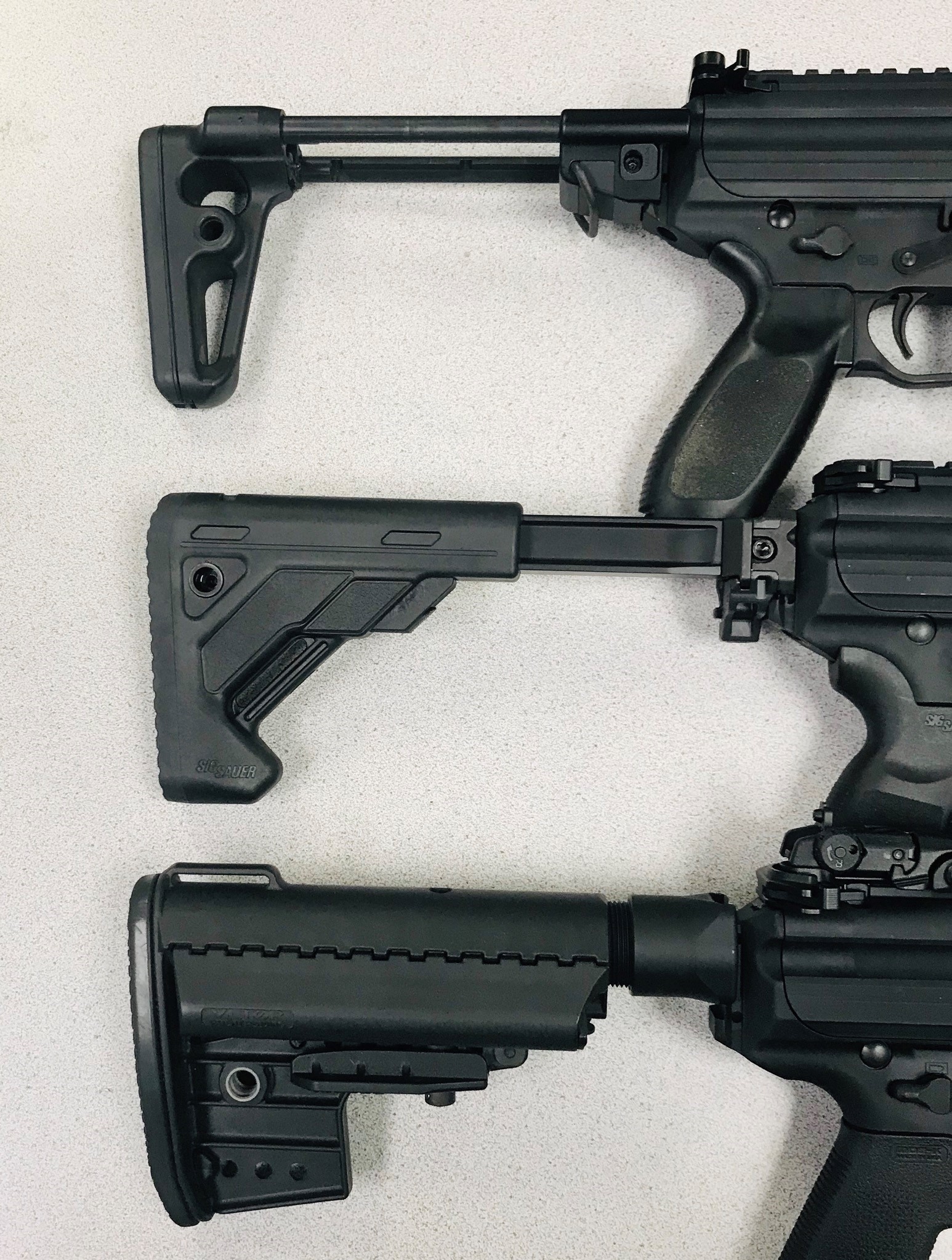
The slim handguard was a definite improvement. It went from a portly 2” width down to 1.6”. While 0.4” may not sound like a lot it made a significant difference in how the gun felt. It fits my hands much better and it is also M-Lok rather than KeyMod. Let’s be honest, M-Lok has won this fight and KeyMod will soon be the new BetaMax (I wonder how many readers will be too young to know that reference).
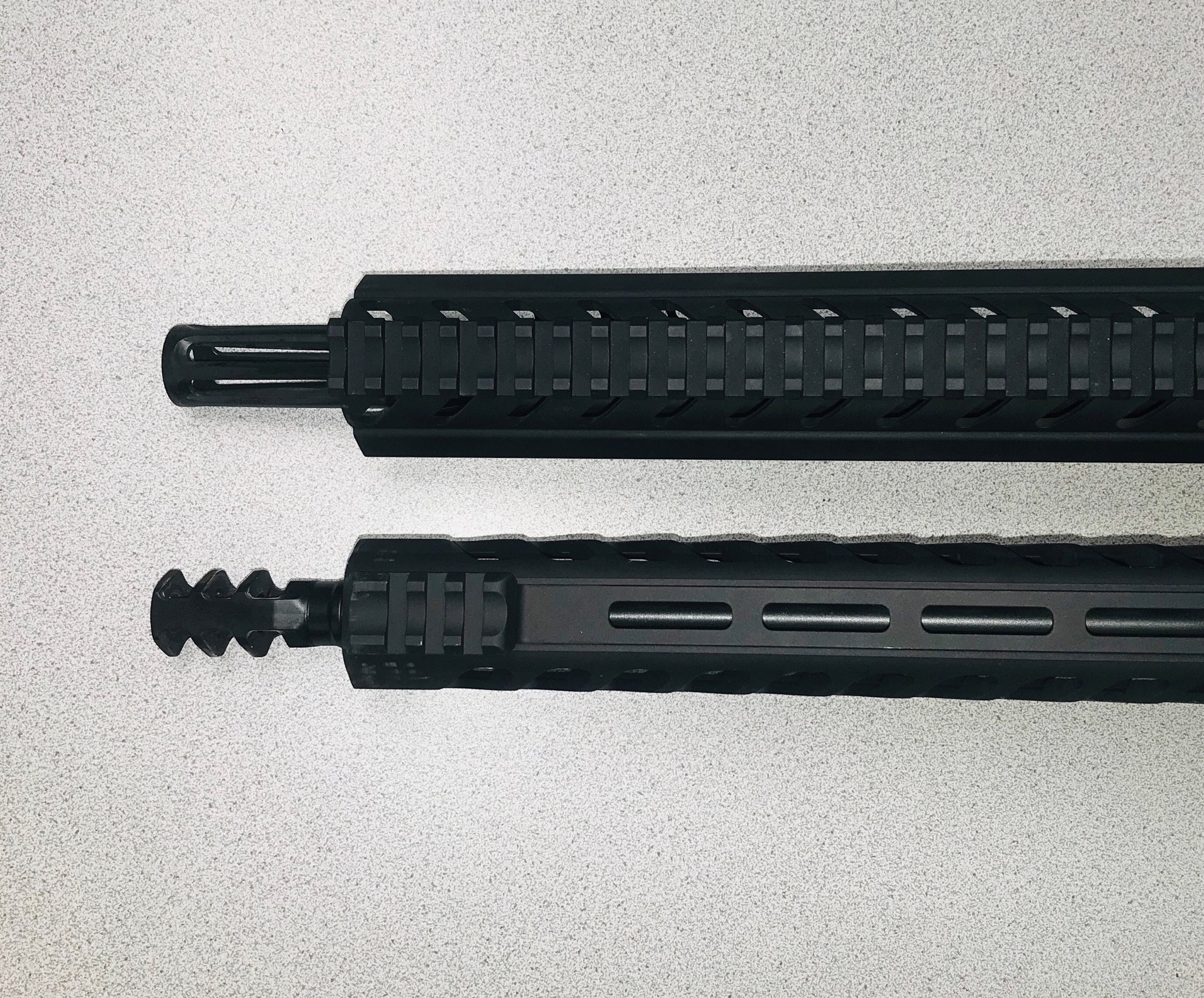
The brake was also a welcome upgrade. It is a three chamber brake that seems to be quite efficient with recoil mitigation and keeping the muzzle flat while shooting. It is definitely better than the pinned and welded flash hider for a competition gun and if you don’t like it, it is easy to change out with anything you can imagine.
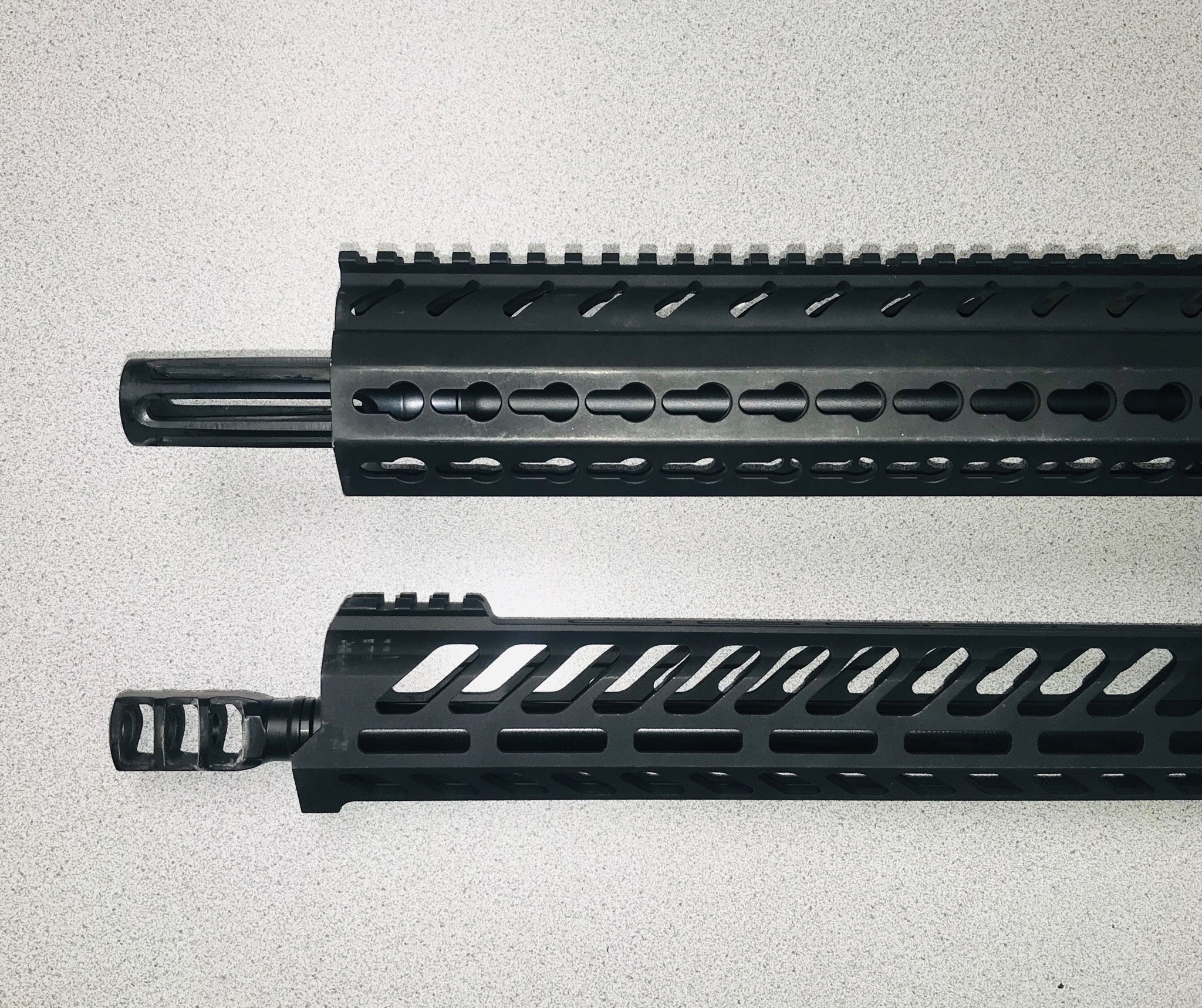
Lastly, it didn’t malfunction! My first 500 rounds went by quickly and without so much as a hint of a problem. The next 500 rounds were exactly the same, not a single malfunction! I was ecstatic about this particular detail as my frustration level with 9mm AR rifles had come to a head.
So is the MPX PCC competition ready out of the box?
In a word: No.
While I was pleased with the changes Sig made, this gun still isn’t quite “competition ready”. Many of the changes I made, which I will outline below, were personal preference. Sig can’t build every preference into a competition ready gun for all shooters. Still, there were a few things I would change before calling the gun competition ready and one thing that simply wasn’t acceptable. The stock.
The new stock was too low for a regular height red dot, the cheek weld was uncomfortable, and the weird locking mechanism of the stock made adjustments impractical on the fly. Being a side folder led to many of the compromises I consider unacceptable in a competition build. The stock folding to the side isn’t useful but a good cheek weld during a rapid string of fire is mandatory. For that reason I purchased an adapter from Taran Tactical Innovations (TTI) that allowed me to affix a mil-spec AR buffer tube. From there I put a Vltor EMod stock, my personal preference. Since the stock attachment point on the back of the receiver is actually a small picatinny rail I installed the TTI adapter one slot higher than intended by design. It was still just low enough for the charging handle to operate properly but it lowered the bore axis relative to the stock and it brought my eye up to the proper level for the red dot.
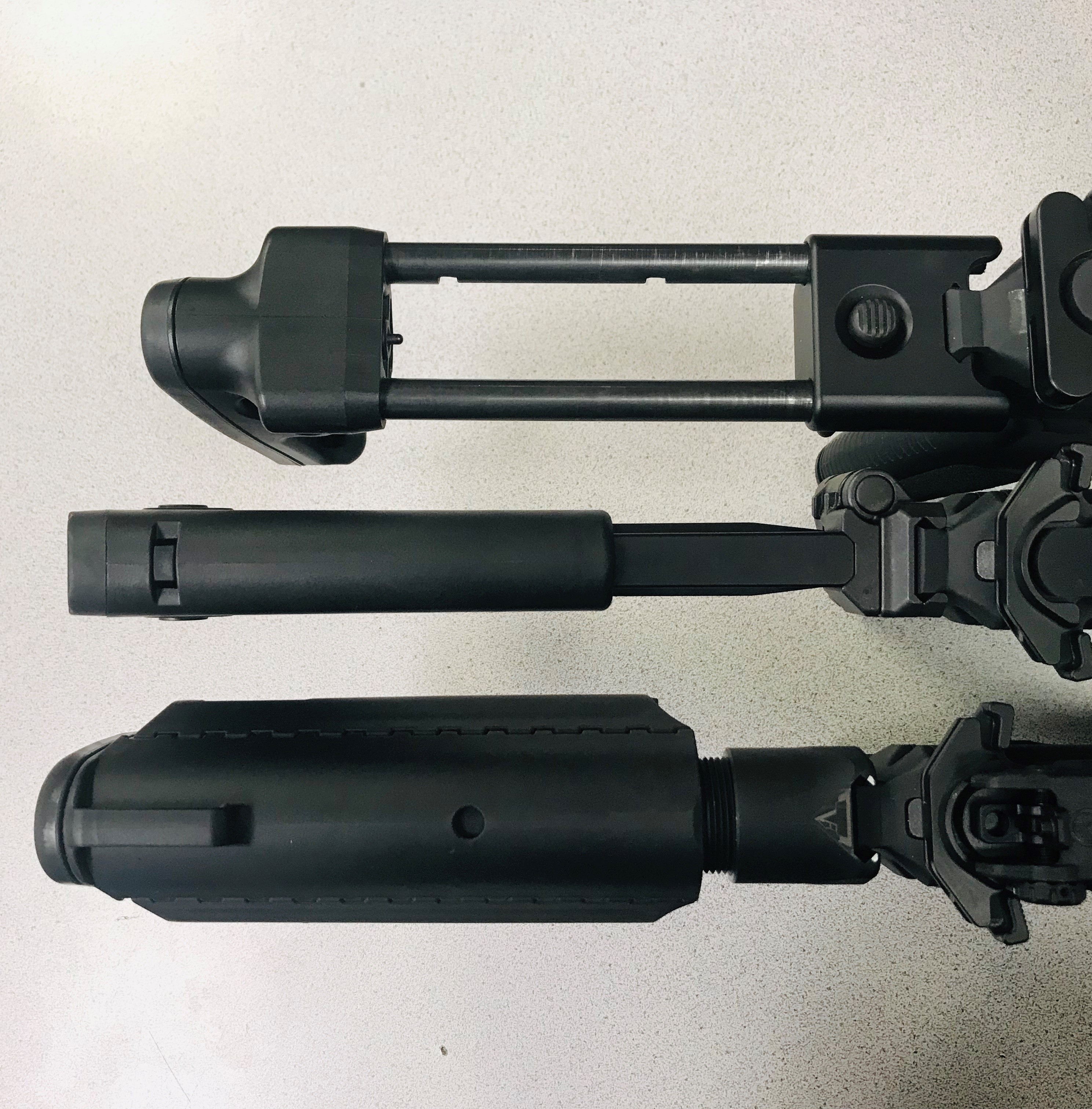
There are a few other things I would like to see changed before calling the gun competition ready. One is a flared magwell. We all know that a nice, wide, open magwell simplifies magazine changes. PCCs are known for having slow mag changes so when one is necessary having a larger magwell would be nice. For that reason, I added a TTI metal flared magwell.
Another change would be shipping the gun with magazines large enough, and in sufficient quantities, for the task. With 32 round courses of fire being common a 30 round magazine clearly isn’t ideal and with some stages having mandatory reloads a spare magazine isn’t just nice, it’s necessary. I put TTI 10 round extensions on two 30 round magazines and they have run well through a few thousand rounds. A factory 40 (or 45) round magazine would be nice and having at least a second magazine (preferably three) would also be useful in a competition ready gun.
A few other tweaks would be nice in a competition ready model. A lighter front end would be great, especially for Steel Challenge. The MPX PCC isn’t overly heavy, but a light front end is helpful during transitions.
Many shooters would like a foregrip. I like having something to index my grip and provide a leverage point to keep the rifle locked into my shoulder while firing. I chose a YHM vertical grip but just about anything would work.
Sights would be useful. I understand Sig left them off because competition shooters are particular about sights and will be changing them anyway. Still, if you’re going to call a gun “competition ready out of the box” A sighting system would need to be included. I decided on a Romeo 5, Magpul MBUS backup sights, and a Lasermaxx green laser for mine.
The last change I made was the pistol grip. While the factory grip will probably work for most shooters I have short thumbs and working the safety and magazine release was a chore with the factory oversized grip. I went with a Magpul K Grip and it works perfectly. I like the angle better and can reach the safety and magazine release without issue.
In the end I’m very happy with the rifle. It has proven reliable through a few thousand rounds and a few matches, it is fun to shoot, and it is effective at shooting fast. I plan to be shooting my MPX PCC in USPSA and Steel Challenge for the foreseeable future. With the track record Sig seems to have listening to the end user maybe the MPX PCC 2 will have an AR stock tube, three 40+ round magazines, and an ultralight barrel/handguard.
Aaron Lorton
L4004


